Order Arthropoda
Hopping. Crawling. Flying. Even digging. Insects, spiders, and other creatures from the order Arthropoda have many lifestyles. Some, such as butterflies, have several life stages going from egg, to larvae, to pupa, to adult insect. All arthropoda are small invertebrates.
There are over 30,000 identified so far in Texas, and 1,035 identified in our Preserve as of October 2023. To see an in-depth look at these creatures, go to the free citizen-science app, iNaturalist, which splits them into two groups:
Insects:
https://www.inaturalist.org/observations?place_id=any&project_id=61345&subview=map&taxon_id=47158
Arachnids:
https://www.inaturalist.org/observations?place_id=any&project_id=61345&subview=map&taxon_id=47119
Here are a few you can find in Spring Creek Forest and Park Preserves.
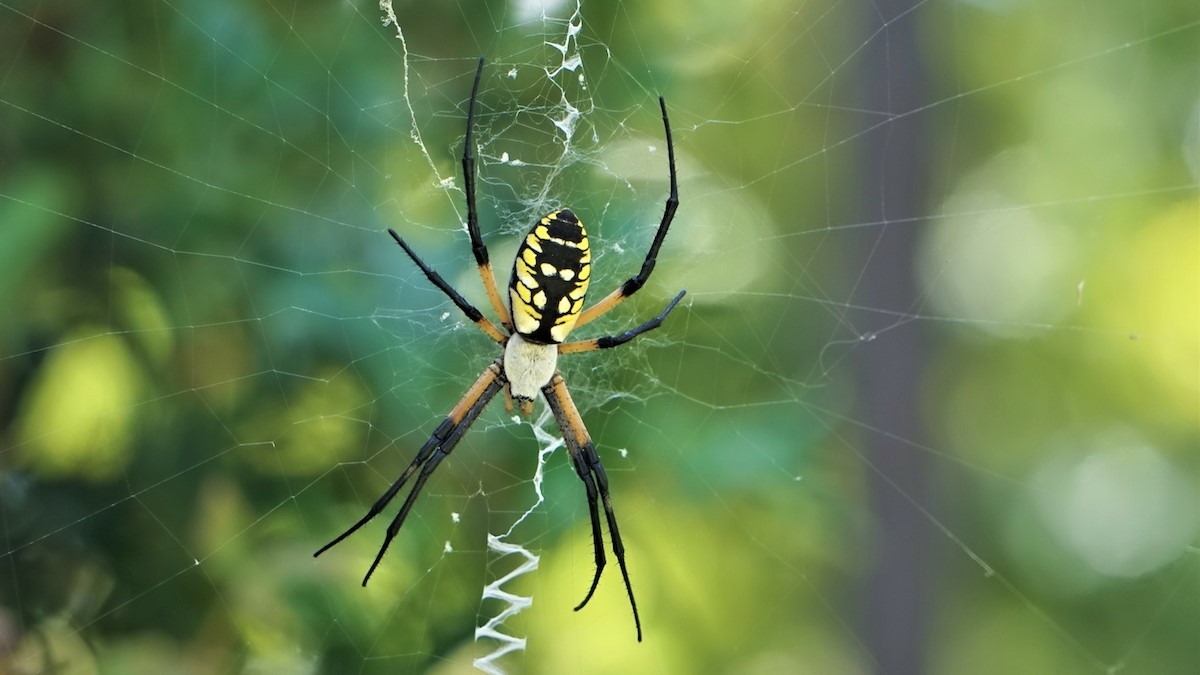
Argiope Garden Spider
These large spiders often spin webs In between tree branches to Snare their prey.
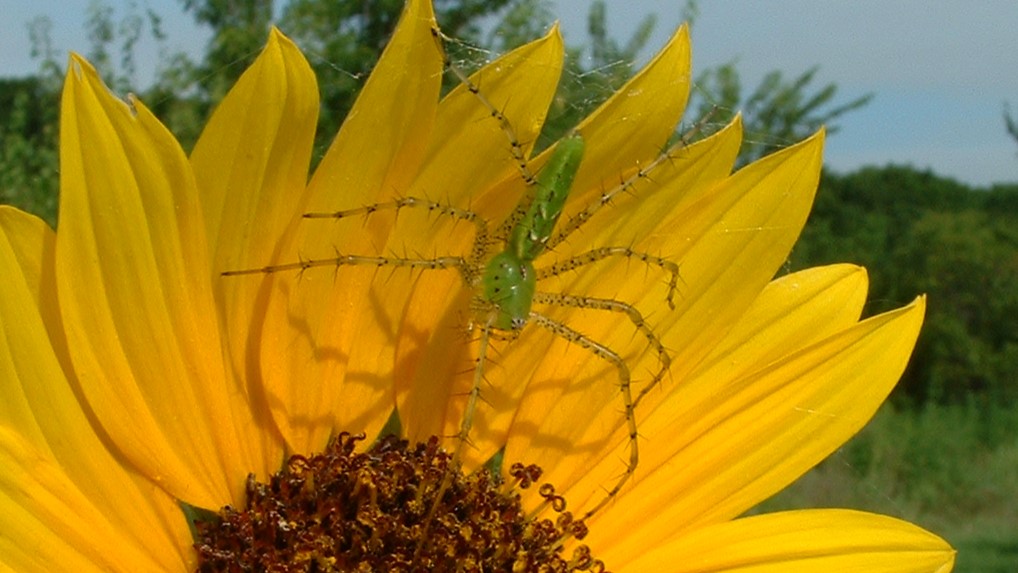
Green Lynx Spider
These spiders are found camouflaged on medium height plants in the summer where they wait to catch their prey. They do not build webs.
Photo by B. Baynham
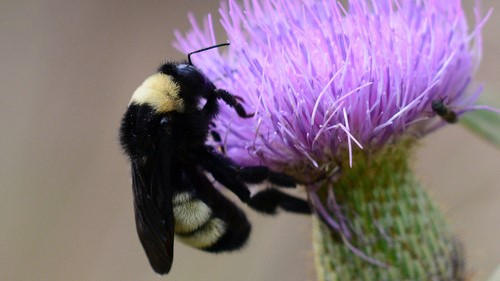
American Bumblebee
This is our largest bee in Texas. Look for them on flowers in the prairie.
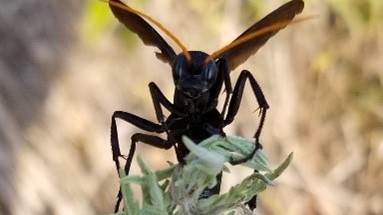
Spider Wasp
She stuffs her brood cells with spiders large and small. Look for nest holes on the edges of pathways.
Photo by J. Aschner
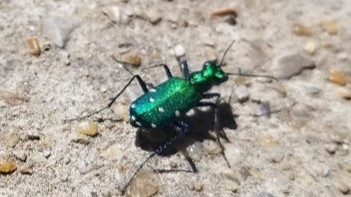
Six Spotted Tiger Beetle
Tiger beetles chase down their prey. Look for them on paths and open areas in the forest.
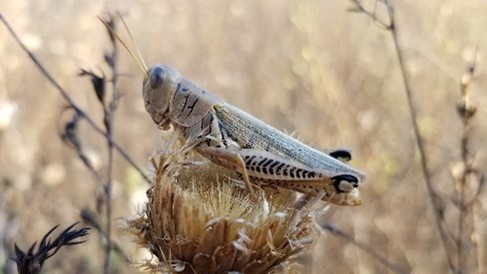
Differential Grasshopper
Our most common grasshopper. Look for them summer and fall.
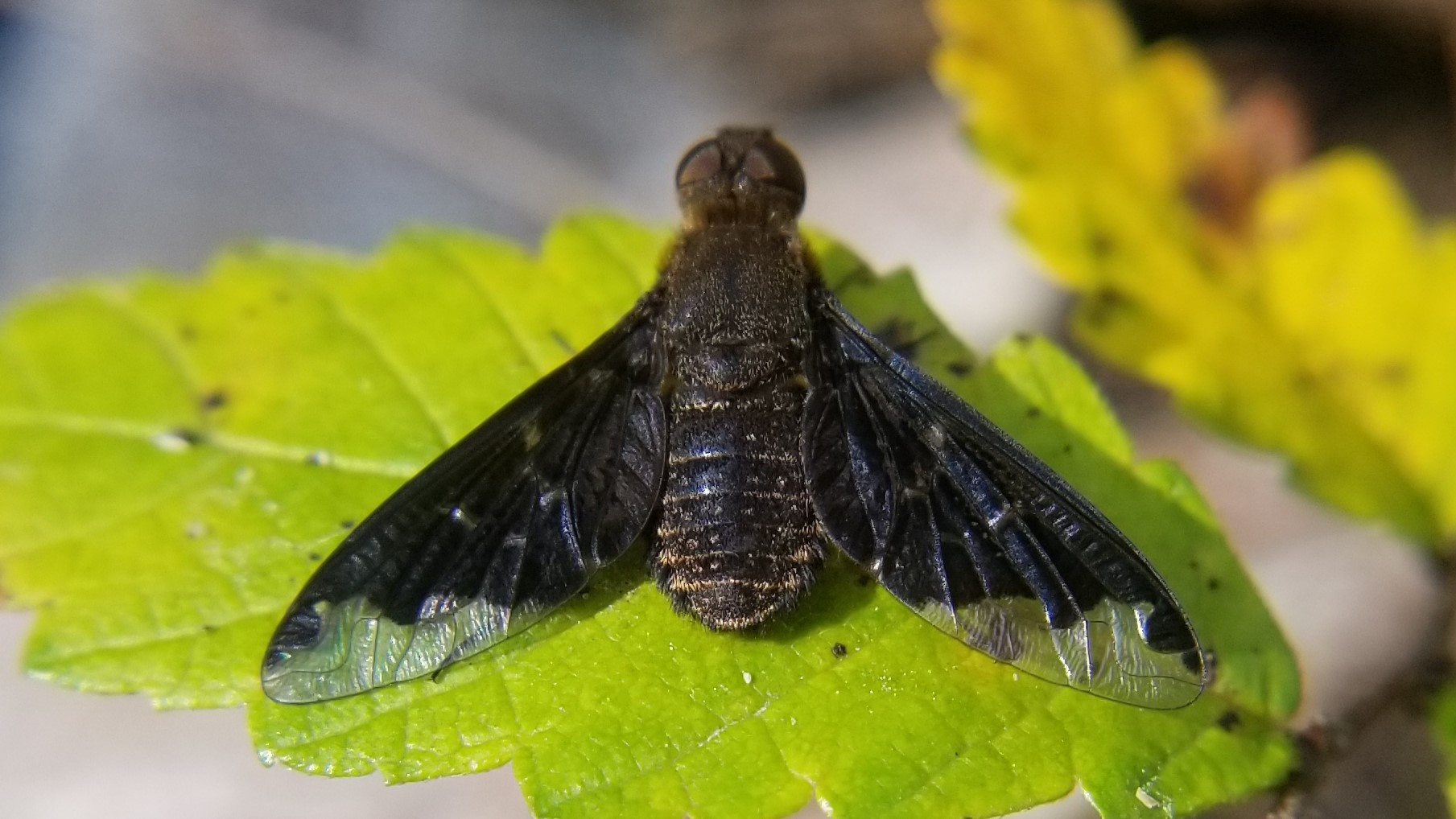
Sinuous Bee Fly
Bee Flies lay their eggs in ground bee nests. They are common flying close to the ground in the summer.
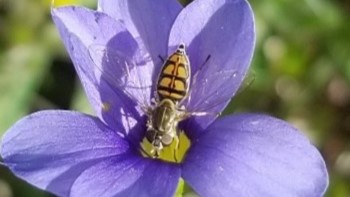
Calligrapher Fly
This small fly mimics bee coloration for protection from predators.
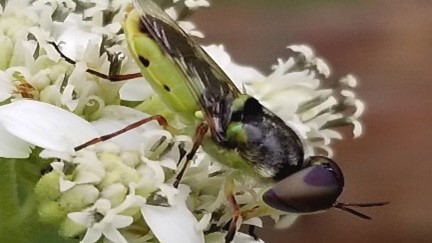
Soldier Fly
These flies live close to water as their larvae are aquatic. You will find them nectaring on prairie plants.
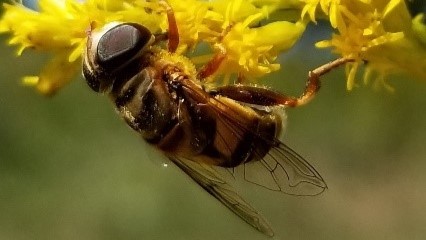
Northern Pushback Fly
Syrphid flies mimic medium sized bees. You will find them on flowering plants in the prairie.
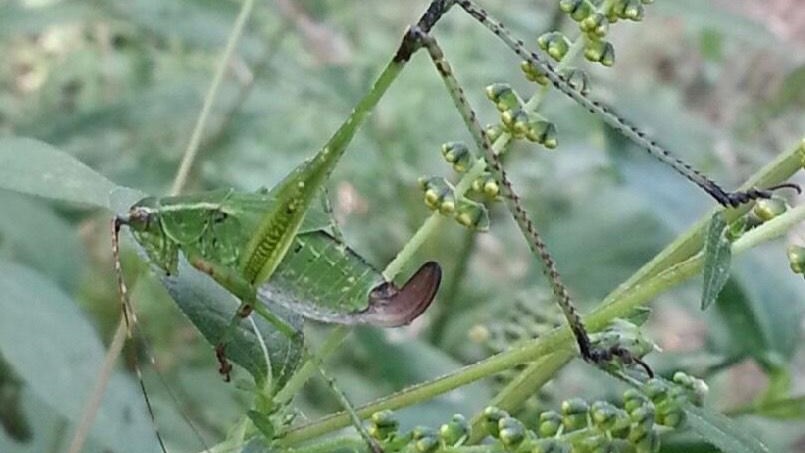
Katydid
Look for these long-legged insects on the prairie in the summer.
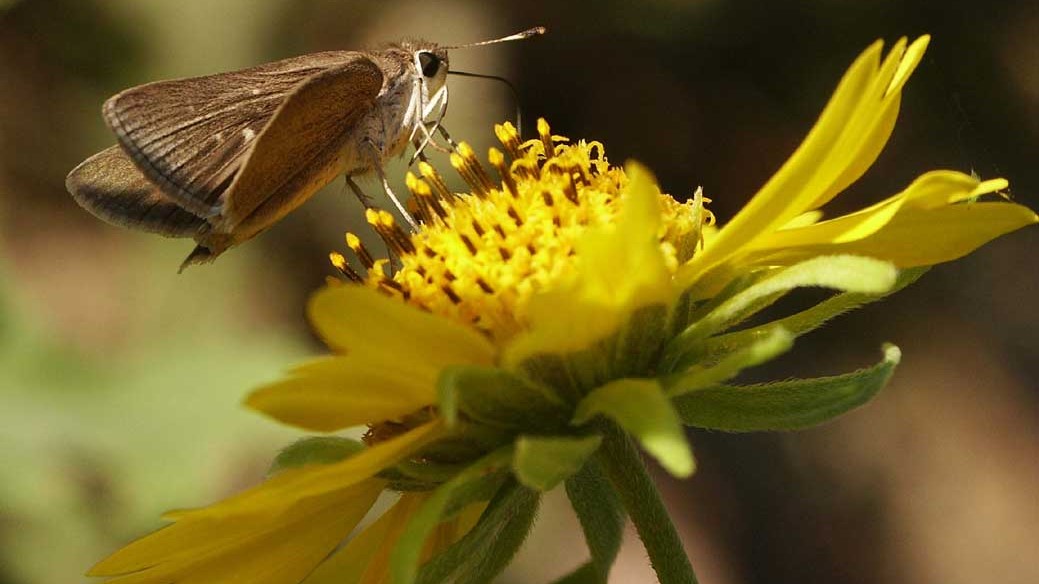
Skippers
Skippers are our most common butterflies at the Preserve. Look for them on the prairie plants in the fall.
Monarch Butterflies have an extraordinary life cycle.
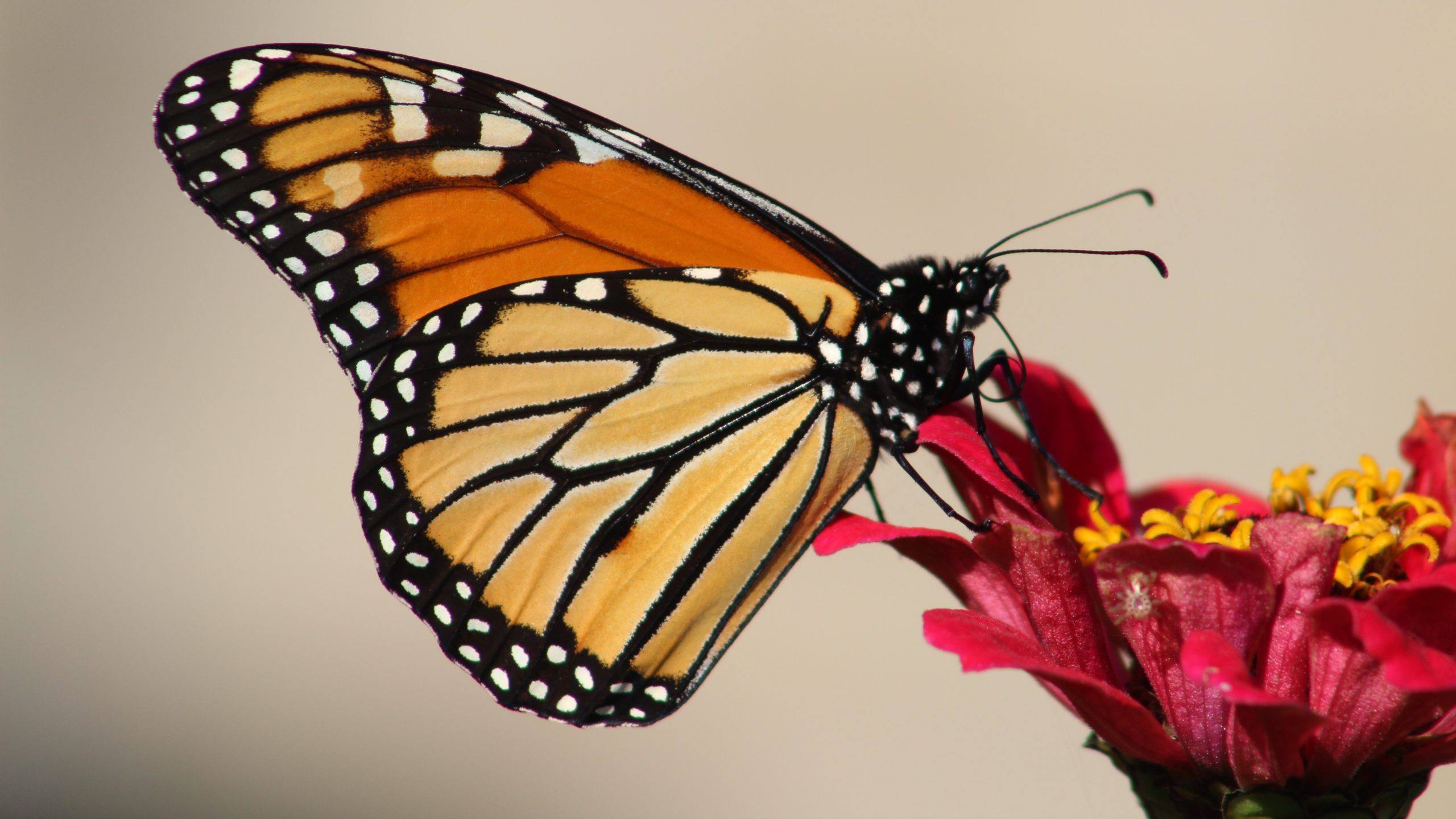
Monarch Butterfly
Monarchs visit the preserve on their migration routes in the spring and fall.
Like other butterflies and moths, Monarch butterflies undergo complete metamorphosis, meaning that they have an egg, larva (caterpillar), pupa (chrysalis), and adult stage. The egg and caterpillar stages occur only on species of native milkweed (genus Asclepias), whereas adults survive by nectaring on a variety of flowering plants.
Monarch butterflies have a migration pattern that allows them to range from northern Mexico where they over-winter, to Canada where they spend some of the summer, then to Mexico again to spend the winter. But the same butterfly does not make it through the entire cycle.
In the spring, the first butterflies leave Mexico and begin flying north, living two to five weeks while laying eggs as they fly through Texas nectaring on flowers. The second group of Monarchs emerges from the eggs in Texas, and continues north, laying their eggs and dying in Oklahoma, Kansas, and Nebraska. This cycle of emerging, flying north and laying eggs continues in the summer for three or four generations of Monarchs. Many reach as far north as Canada.
As fall begins, the final generation of Monarchs stops mating and changes their metabolism so they can live long enough to fly all the way back to Mexico, over-winter by hanging in the trees with thousands of other Monarchs, and then start the journey north again in the spring. These final adults can live up to nine months.
Much of the Monarch information was obtained from https://monarchjointventure.org/monarch-biology/life-cycle.
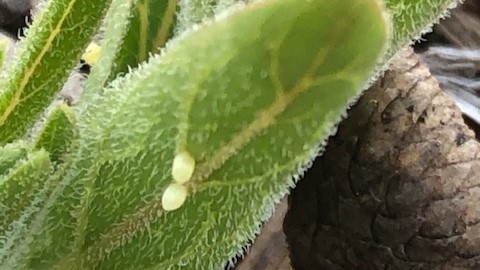
1. Female lays eggs – Pin-head sized eggs are laid on the underside of native Milkweed leaves. Monarch caterpillars can only eat native Milkweed. You can find out which species of Milkweed is native to your zip code and plant only that. It has been found that planting Tropical Milkweed where it is not native, is detrimental to the life cycle.
Photo by B. Baynham
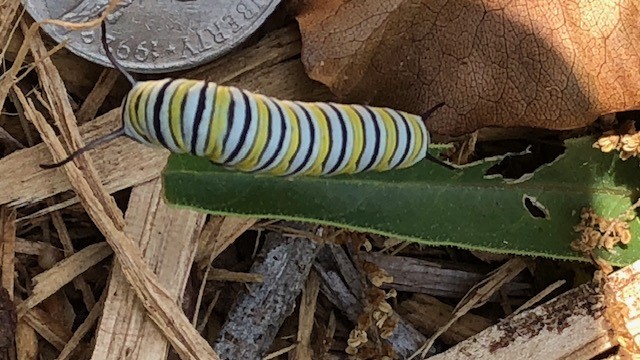
2. Caterpillar grows from egg-sized larva to approximately 2 ½ inches long within about two weeks. Within that short time, they grow to almost 2,000 times their original mass.
Photo by B. Baynham
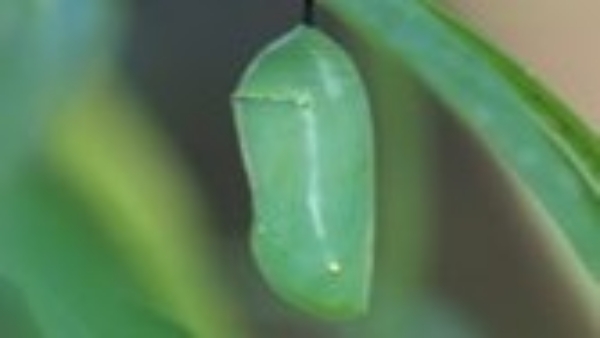
3. The chrysalis just formed is bright green with a line of gold dots around the top. The creature stays in the chrysalis for 8-15 days, depending on temperature.
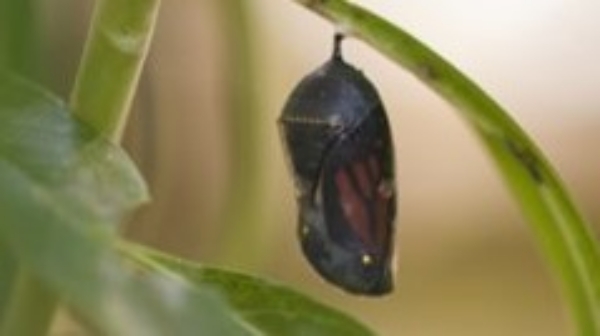
4.The chrysalis with a Monarch inside that is nearly ready to emerge. The Monarch wings are visible through the pupa covering.
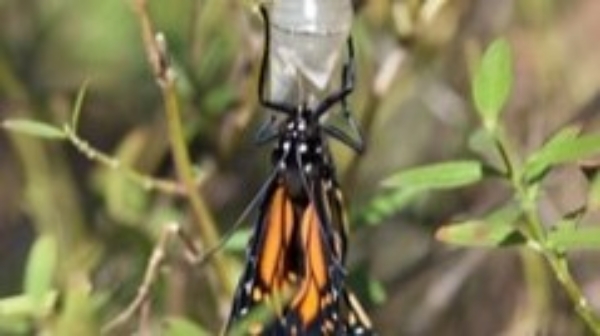
5. The Monarch butterfly just emerged from the chrysalis hangs to the empty shell while it pumps fluid into its wings and lets them dry. They emerge full-sized as fully-grown adults ready to fly north, lay eggs, and keep the Monarch cycle going.
